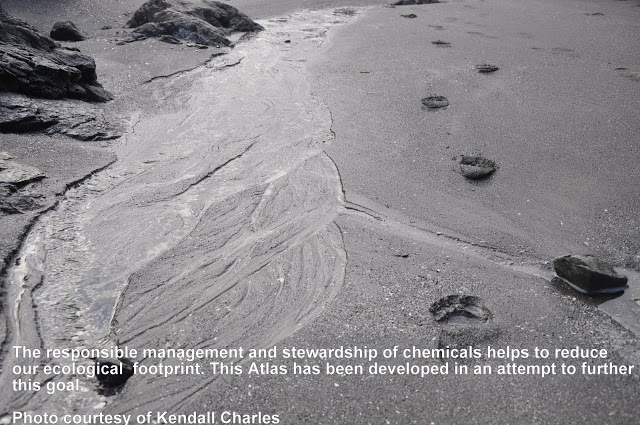The Pacific Region Contaminants Atlas (PRCA) is an online resource tool which was created to explore environmental contaminants topics in British Columbia, Canada.
The industrialized and urbanized Georgia Basin, situated in the southwestern corner of British Columbia, is one of the key areas of concern and is the current focus of this Atlas.
Information sharing is crucial to effective decision-making by stakeholders. This Atlas provides access to scientific and technical information to support such decision-making and presents information on successes, future needs, and continuing concerns with respect to contaminants in the Georgia Basin.
In addition, the Atlas includes a Kids™ Page, an engaging and entertaining tool, which provides educational information on environmental contaminants for school-age children. Kids™ Page can be accessed by clicking on the special Frogman icon.

To address the needs of a wide range of stakeholders, from the general public to researchers and regulators, the PRCA provides environmental contaminants related information at various levels of detail. Brief summaries on topics of interest are provided in each section of the Atlas, which are accessible from the menu on the left. However, more detailed information can be accessed from each section through hyperlinks within the text and also through the Links to fact sheets and other websites at the bottom of each page.
The various sections of the PRCA provide information on topics and issues relating to contaminants in the Georgia Basin. For example, the section titled “What are the contaminant concerns in the Georgia Basin?” includes information on contaminant sources, environmental levels, potential impacts, current issues, and species of special concern (such as killer whale, harbour seals, and chinook salmon). Government programs, existing regulations, and community-based partnerships already implemented to address contaminant concerns are summarized in the section on “What is being done?”. And the section on “Success Stories” provides insight into some of the initiatives which have been successful in reducing contaminants releases and decreasing the risks associated with these contaminants in the Georgia Basin environment. To find out more about actions and choices that we can all make, on an individual basis, to minimize our contributions of contaminants to the environment refer to the “What can you do?” section.
The PRCA menu on the left also contains several Tools to assist the user. These include:
- Map Explorer, which contains over 200 maps depicting information and datasets relating to contaminants in the environment as well as physical features, human use, natural resources, and sensitive and protected areas within the province. These layers can be viewed individually or in a multitude of combinations. The Map Explorer layers are available in two versions. The Google version is the recommended version for most users. However, users with older versions of some browsers (e.g., Internet Explorer version 6 or earlier) may not be able to properly access this version. The Ajax version of the map layers has been provided for users with older browsers.
- Contaminants Database Search Engine, a geographically referenced searchable database of published literature relating to environmental contaminants in the Georgia Basin and other areas of British Columbia. Searches can be conducted based on author, title, date range, specific contaminant, source of release, environmental media, geographic area within the province (Regional District or watershed), or by a combination of these variables.
- Continental and Oceanographic Data Information System (CODIS), a database of metadata of Canada’s Arctic and Pacific Ocean datasets of environmental information. CODIS was originally developed by Fisheries and Oceans Canada (DFO); however, it is no longer being maintained by DFO. To ensure that the information contained in this database remains available for use, CODIS now resides on the PRCA as a valuable resource tool. For more information on CODIS, refer to the DFO CODIS User Guide.
- Tutorial provides a “tour” of the PRCA and provides assistance with the easy to use instructions to help you make the most of your visit to the PRCA.
The development of the PRCA was funded, in part, by the Georgia Basin Action Plan (GBAP). While the initial focus of the Atlas has been the Georgia Basin, the PRCA was intentionally designed to allow for expansion to include other important eco-regions within British Columbia, Yukon and areas of the Northwest Pacific Coast of the United States, such as the Puget Sound.
The PRCA was created through extensive consultations between Environment and Climate Change Canada, Fisheries and Oceans Canada, BC Ministry of Environment, Community Mapping Network, and the BC Conservation Foundation.
